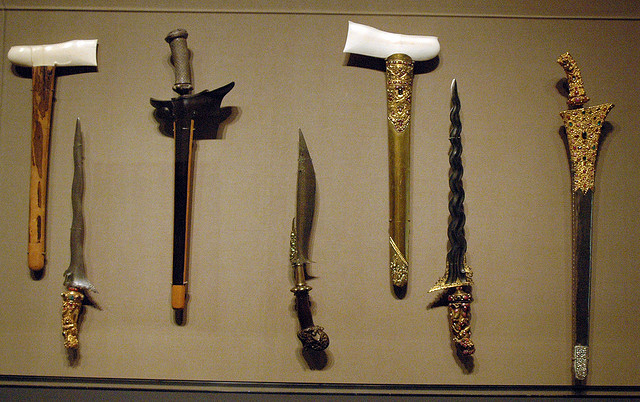![]() Објавено во United States of America - Социјална интеракција и забава - 29 Nov 2016 05:55 - 2
Објавено во United States of America - Социјална интеракција и забава - 29 Nov 2016 05:55 - 2
Pencak Silat is an umbrella term for the martial arts of Indonesia. The leading organization of pencak silat in Indonesia is IPSI (Ikatan Pencak Silat Indonesia, meaning Pencak Silat Association of Indonesia). The liaison body for international pencak silat is the International Pencak Silat Association or PERSILAT (Persekutuan Pencak Silat Antara Bangsa).
Although the word silat is widely known through much of South East Asia, the term pencak silat is specifically used in Indonesia. Pencak silat was chosen in 1948 as a unifying term for the Indonesian fighting styles. It was a compound of the two most commonly used words for martial arts in Indonesia. Pencak was the term used in central and east Java, while silat was used in Sumatra and Borneo. In modern usage, pencak and silat are seen as being two aspects of the same practice. Pencak is the performance aspects of the martial art, while silat is the essence of the fighting and self-defense. It is often said by practitioners that there can be no silat without pencak, on the other hand pencak without silat skills is purposeless.
The pencak silat tradition is mostly oral, having been ped down almost entirely by word of mouth. In the absence of written records, much of its history is known only through myth and archaeological evidence. The earliest fighting arts in Indonesia can be traced back to prehistoric tribes. The primary weapons of Indonesia’s tribal peoples were the single-edge sword, shield and javelin. The inhabitants of Nias Island had until the 20th century remained largely untouched by the outside world, however, they are culturally similar to the Himalayan Naga tribe. Neighbouring Sumatrans are said to have left the Nias people alone because they were fearless warriors.
Weapon of silat :
1. Kris : A dagger, often with a wavy blade made by folding different types of metal together and then washing it in acid.
2. Kujang : Sundanese blade roughly shaped like a deer’s antler.
3. Samping/Linso : Piece of silk fabric worn around the waist or shoulder, used in locking techniques and for defense against blades.
4. Batang/Galah : Rod or staff made from wood, steel or bamboo.
5. Cindai : Cloth, usually worn as sarong or wrapped as head gear.
6. Tongkat/Toya : Walking-stick carried by the elderly and travelers.
7. Kipas : Traditional folding fan preferably made of hardwood or iron.
8. Kerambit/Kuku Machan : A blade shaped like a tiger’s claw
9. Sabit/Clurit : A sickle, commonly used in farming, cultivation and harvesting of crops.
10. Sundang : A double edge Bugis sword, often wavy-bladed
11. Rencong/Tumbuk Lada : Slightly curved Minang dagger, literally meaning “pepper crusher”.
12. Gedak : Mace or club made of steel.
13. Tombak/Lembing : Spear or javelin made of bamboo, steel or wood that sometimes has horsehair attached near the blade.
14. Parang/Golok : Machete or broadsword, commonly used in daily tasks such as cutting through forest brush.
15. Trisula : A trident or 3-pronged spear
16. Chabang/Cabang : Short-handled trident, literally meaning “branch”
Source : Indonesian Hot News
Поддржи
HeeHooJohnnatJohnnatJohnnatJohnnatJohnnatf1233man







